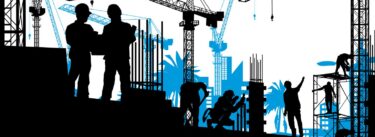Dear Gemba Coach,
I’m two years into establishing a pull system through my plant. It hasn’t been easy because of the high mix/low volume environment, but I feel we’re getting there with clear improvements in service and lower inventories. However, two of my key managers are still fighting the system and creating a lot of conflict on the team. These are good guys I used to rely on a lot, but now I don’t know. Is this normal?
Ah, yes. Thanks for your honest and deep question, and yes, it does happen a lot. The old timers taught us that pull systems went beyond a scheduling technique and actually changed deeply the work dynamics in any plant.
“Let the pull manage the work and focus your managers on solving problems,” the sensei used to teach us. This is a real revolution in the shop floor because managers traditionally see their role in organizing work to keep people making parts – they shift workers here and there according to MRP requirements, machine availability, worker skills and so forth. In other words, they manage.
The pull system changes all that inasmuch as:
- The leveled plan is set for the week – the same every day.
- The route of components is set by the train (tugger) deliveries.
- What needs to be made is set by the kanban cards.
- Teams are stabilized working in set machine cells.
In other words, teams should be able to work autonomously. As long as they show up on time in the morning, team members should be able to work all day long by following the cards and delivering to the pick up trains without ever needing management supervision.
Of course, life in a pull system is not like that. Reality exists, reality resists and the friction of daily performance problems now can’t be hidden by rescheduling the work. For the pull system to work overall, each part has to work – like rowers on a boat. Every one should work at the same rhythm and with the same pull.
Because every day brings new problems, team members face issues of:
- Materials: components not arriving on time or arriving with defects that need to be inspected out.
- Machines: equipment is never as stable and available as we’d liked, so machines have to be sorted out, and much of it can’t be done within the team.
- Manpower: not all people are equally trained at all aspects of the job, and not all people show up every morning.
- Method: overburden and unlevel work is always an issue no matter how much the cells progress in their handling of standardized work, and this needs to be sorted out through kaizen.
As a result, management job has shifted from running the shop by telling people what to do to supporting teams in solving problems so that the pull system runs smoothly.
Pull Versus Human Nature
What will first blow up in your face is that that expert fire-fighters simply don’t cut it any more. The pull system pulls all cells equally, as a river is fed by all its tributaries, and being the only brain in the shop that runs around solving this problem, then this other problem, simply can’t work.
Managers of pulled shops need to rely on local leaders to sort out many problems so that they can focus on the really tough ones. Putting out fires will always be part of any manager’s job, but in a pull system, the emphasis is on developing local leaders, and putting out fires only when absolutely necessary. Managers jobs are turned on their heads from 70% firefighting and 30% training to the other way around: 70% training, 30% firefighting.
Which is where the pull system hits human nature. It has long been known that our closest evolutionary cousins, chimpanzees, organizes themselves as hierarchical societies in which the dominant male is hostile to any lower-ranking member that could one day challenges his authority. Alpha males are also quite clever in breaking up alliances between lower order chimps to make sure they won’t be ganged up on (which is often how their own rule eventually ends up being toppled).
Any reading of history will demonstrate how leaders are ever willing to undermine group success in favor of their own power. New research by Jon Maner and Charleen Case shows. Bad bosses intentionally side-line high-performing team members, limit communications among teams and don’t hesitate to bring together ill-matched teams if they feel this will help to secure their place at the top.
Pull Versus the Boss
There are, of course, many motivations for wanting to be the boss. One is to like getting things done. Another is that someone has to do it. Some people just like running others, regardless of purpose or performance. They enjoy the climb up the corporate ladder and they get a kick out of telling others what to do. These bosses typically will:
- Isolate high-potential individuals to make sure they have no internal competition.
- Surround themselves with hangers-on and enforcers, people whose only chance of success is through the boss’ own success.
- Use these enforcers to favor those they like and punish those they don’t and make sure skilled subordinates don’t cooperate and bond.
Such behavior is made worse when bosses feel insecure or threatened. Which is exactly what a pull system does – by making visible every single problem and showing starkly where real issues are. Every single time I’ve seen a pull system really pull on the gemba, we’ve discovered that some previously unseen department is a critical bottleneck – often for competence issues.
In the last instance, for example, we discovered that the quality department would sequester all parts between two processes and have operators check them one-by-one, although some issues had not been seen for years. The quality manager didn’t understand how to be flexible with 100% inspection, so did it for everything all the time, creating huge confusion in the flow and delays which appeared as soon as the plant pulled in earnest. And, yes, in the end, he had to go because he wouldn’t change his mind; he never relented. There hasn’t been a quality issue on these aspects since.
Real Lesson of Pull
The two essential management dimensions of a pull system are:
- Working together across functions to deliver service and quality to customers.
- Developing local leaders who can solve daily performance issues to liberate senior management for training and very big fires.
This goes completely against all instinctive reactions of many historical bosses – and, statistically, there is no reason to believe you have no such power-types in your management teams. You’re just discovering it. My bet is that as you solve the problem, you’ll discover how deeply the problem is as the next tier of people these guys relied on might be their cronies, rather than the competent staff that will be in the department somewhere (after all, work needs to get done).
As in many lean cases, I know of no quick fix, other than set up a regular review of all management (two tiers down) and start asking yourself the right questions: are you focusing daily on developing a new generation of leaders? Or are you allowing powerful people to limit emerging leadership for the comfort of having managers who get things done?
Gemba is a great teacher, one sensei once told me, and indeed, the pull system teaches us far more than logistics. The more frequent the pull, the more regular it is, the more we learn about managers’ competence and attitude on a daily basis. The real lesson of the pull system is teamwork.






